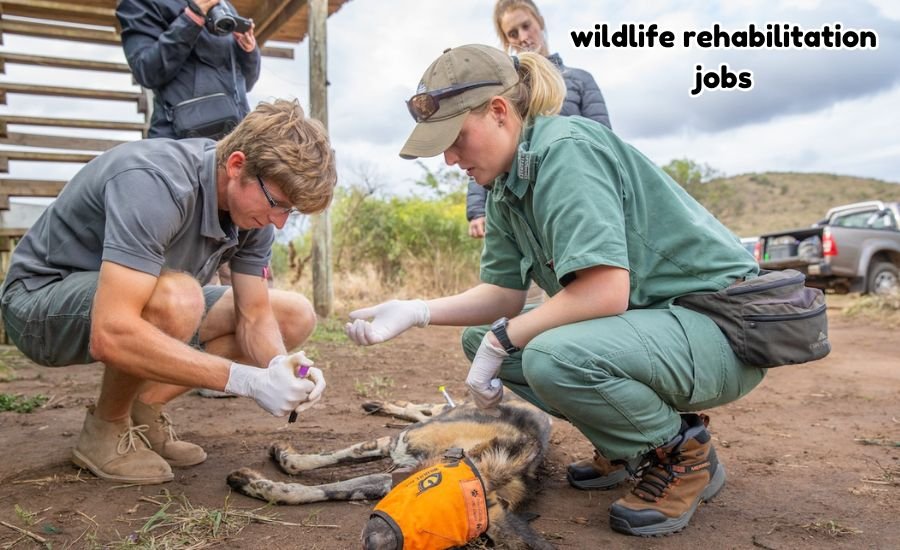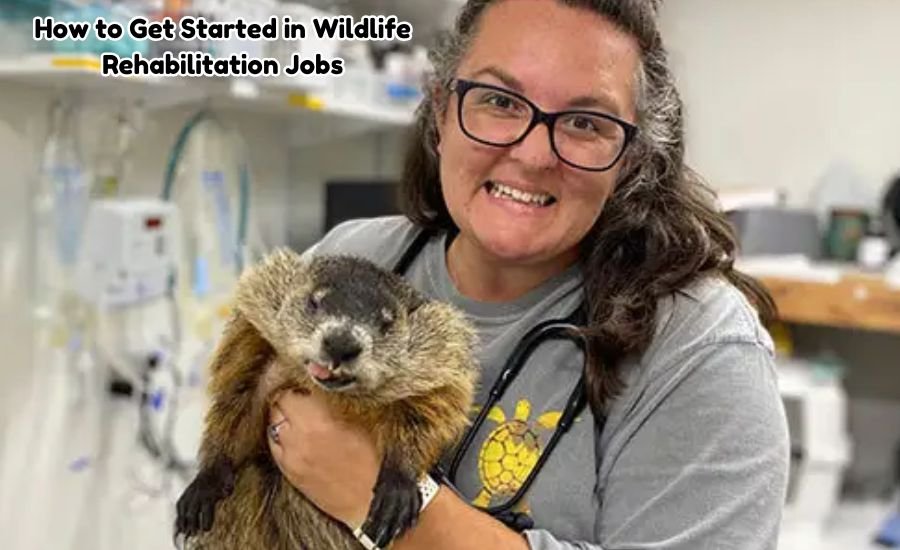Wildlife rehabilitation jobs offer an exciting and rewarding career path for those who love animals and want to contribute to their conservation. These jobs involve rescuing, treating, and releasing injured or orphaned wild animals back into their natural habitats. If you are passionate about wildlife, this career might be the perfect fit for you. Working in this field not only allows you to help animals in need but also provides an opportunity to educate the public about the importance of wildlife conservation.
Many professionals find this career fulfilling because they play a direct role in preserving the delicate balance of ecosystems.Wildlife rehabilitation is a vital field that ensures the protection and recovery of animals that have suffered due to human activities or natural disasters. Professionals in this industry dedicate their time and expertise to caring for a wide range of species, from small birds to large mammals.
What Are Wildlife Rehabilitation Jobs?

Wildlife rehabilitation jobs involve working with animals that have been injured, sick, or abandoned. These roles require extensive knowledge of animal care, medical treatment, and habitat preservation. Professionals in this field help rehabilitate animals until they can survive independently in the wild. Some jobs also focus on public education and conservation efforts.
Many wildlife rehabilitation professionals collaborate with veterinarians, biologists, and conservationists to ensure that the best possible care is provided for the animals. This field requires patience, dedication, and a strong commitment to the well-being of wildlife. Rehabilitation centers often receive animals that have been affected by habitat destruction, human interference, or natural disasters, making the work even more critical.
Common Roles in Wildlife Rehabilitation Jobs
There are various roles within the field of wildlife rehabilitation. Below are some of the most common positions:
| Job Title | Responsibilities | Required Education |
| Wildlife Rehabilitator | Provides medical care, food, and shelter for injured animals | Bachelor’s in Biology, Zoology, or related field |
| Veterinary Technician | Assists veterinarians in treating injured wildlife | Veterinary Technician Certification |
| Wildlife Biologist | Studies animal behavior and ecology to support rehabilitation efforts | Bachelor’s or Master’s in Wildlife Biology |
| Animal Care Assistant | Helps feed, clean, and monitor animals | High School Diploma or Associate Degree |
| Conservation Educator | Teaches the public about wildlife and conservation | Degree in Environmental Science or Education |
Each of these roles plays an essential part in ensuring that wildlife receives the necessary care to recover and thrive. Wildlife rehabilitators work closely with veterinarians to assess injuries and administer appropriate treatments. Veterinary technicians assist in surgeries, medical procedures, and general animal health monitoring. Wildlife biologists research animal behaviors, study environmental impacts, and contribute to policies that protect wildlife. Animal care assistants perform hands-on work, feeding and caring for animals in rehabilitation centers. Conservation educators spread awareness about protecting wildlife and advocate for responsible environmental practices.
Skills Required for Wildlife Rehabilitation Jobs
A career in wildlife rehabilitation requires a combination of technical skills and personal qualities. Here are some essential skills needed for success in this field:
- Animal Handling: Ability to safely handle wild animals without causing stress or injury. This skill requires patience and an understanding of animal behavior.
- Medical Knowledge: Understanding of common injuries and diseases affecting wildlife. Knowing how to administer medications, treat wounds, and assist in surgeries is crucial.
- Observation Skills: Monitoring animals for signs of improvement or distress. Recognizing early warning signs of illness or complications can save an animal’s life.
- Communication: Educating the public and working with a team of professionals. Strong verbal and written communication skills help in spreading awareness and collaborating effectively.
- Problem-Solving: Finding creative solutions to rehabilitate and release animals successfully. Each animal case is unique, requiring innovative approaches for recovery and reintegration into the wild.
Where to Find Wildlife Rehabilitation Jobs
There are many places where you can find job opportunities in wildlife rehabilitation. Some of the top employers in this field include:
| Employer Type | Examples |
| Nonprofit Organizations | National Wildlife Rehabilitators Association, Wildlife Conservation Society |
| Government Agencies | U.S. Fish and Wildlife Service, State Wildlife Departments |
| Zoos and Sanctuaries | National Zoos, Private Wildlife Reserves |
| Research Institutions | University Research Programs, Wildlife Biology Labs |
| Veterinary Clinics | Clinics Specializing in Exotic and Wild Animals |
Each of these organizations plays a key role in wildlife rehabilitation and conservation. Nonprofit organizations often rely on donations and volunteers to operate their centers. Government agencies enforce wildlife protection laws and provide funding for rehabilitation programs. Zoos and sanctuaries offer specialized care for endangered species and injured animals that cannot return to the wild. Research institutions conduct important studies on animal behavior, health, and rehabilitation techniques. Veterinary clinics focusing on exotic animals provide crucial medical care for injured wildlife.
Salary Expectations and Career Growth
Salaries in wildlife rehabilitation jobs vary based on experience, location, and job role. Here’s a general overview of expected salaries in this field:
| Job Title | Average Salary (Annual) |
| Wildlife Rehabilitator | $30,000 – $50,000 |
| Veterinary Technician | $35,000 – $55,000 |
| Wildlife Biologist | $50,000 – $80,000 |
| Animal Care Assistant | $25,000 – $40,000 |
| Conservation Educator | $40,000 – $60,000 |
Career growth in wildlife rehabilitation depends on gaining experience, earning specialized certifications, and advancing in leadership roles. Professionals may start as volunteers or interns and work their way up to managerial positions in rehabilitation centers, zoos, or research institutions. Some experienced rehabilitators even establish their own wildlife rescue organizations. Continuing education and staying updated on conservation laws and medical advancements can also lead to better career opportunities.
How to Get Started in Wildlife Rehabilitation Jobs

If you want to enter the field of wildlife rehabilitation, follow these steps:
- Gain Education and Training: Earn a degree in a related field like biology, zoology, or environmental science. Some programs offer specialized coursework in wildlife rehabilitation and veterinary medicine.
- Volunteer or Intern: Get hands-on experience by working with rehabilitation centers or conservation groups. Volunteering can help you build essential skills and connections within the industry.
- Obtain Certifications: Some states require a wildlife rehabilitator permit to work legally in this field. Certification programs provide training in animal care, disease management, and ethical rehabilitation practices.
- Network with Professionals: Join organizations like the International Wildlife Rehabilitation Council to connect with experts. Attending conferences and workshops can help you stay updated on the latest rehabilitation techniques.
- Apply for Jobs: Look for job openings in animal rescue centers, zoos, and conservation organizations. Tailoring your resume to highlight relevant experience and skills will increase your chances of securing a position.
The Future of Wildlife Rehabilitation Jobs
As human impact on the environment continues to grow, the demand for wildlife rehabilitation professionals is expected to rise. Conservation efforts are becoming more critical, and organizations worldwide are investing in animal rescue programs. Future developments in this field may include advanced medical treatments, habitat restoration projects, and increased public awareness campaigns.
Technology is also playing a larger role in wildlife conservation, with tools like GPS tracking, remote monitoring, and artificial intelligence helping rehabilitators track animal progress and ensure successful reintegration into the wild.
Conclusion
Wildlife rehabilitation jobs provide a meaningful career for those passionate about animal welfare and conservation. These roles offer the chance to make a real difference by rescuing, treating, and releasing injured animals back into their natural habitats. Whether working hands-on with wildlife, conducting research, or educating the public, each role contributes to preserving ecosystems and protecting vulnerable species.
As human activities continue to impact wildlife, the need for skilled rehabilitators is growing. Advancements in medical care, conservation efforts, and technology are helping professionals improve rehabilitation success rates and ensure long-term sustainability. For those who are committed, patient, and willing to learn, this career path offers both personal fulfillment and professional growth.
What You Should Know: Wildlife-veterinarian-essential-guide-for-conservation-success
FAQs
What do wildlife rehabilitators do?
Wildlife rehabilitators rescue, treat, and care for injured or orphaned animals before releasing them back into the wild.
Do I need a degree to work in wildlife rehabilitation?
While a degree in biology, zoology, or a related field is helpful, some positions accept hands-on experience and certifications.
Where can I find wildlife rehabilitation jobs?
Jobs are available at wildlife rescue centers, zoos, conservation organizations, and government agencies.
What skills are needed for wildlife rehabilitation jobs?
Key skills include animal handling, medical knowledge, problem-solving, and strong communication abilities.
Are wildlife rehabilitation jobs paid or volunteer-based?
Some roles are paid, but many start as volunteer or internship positions to gain experience.